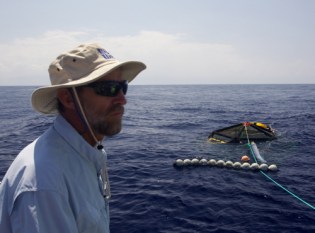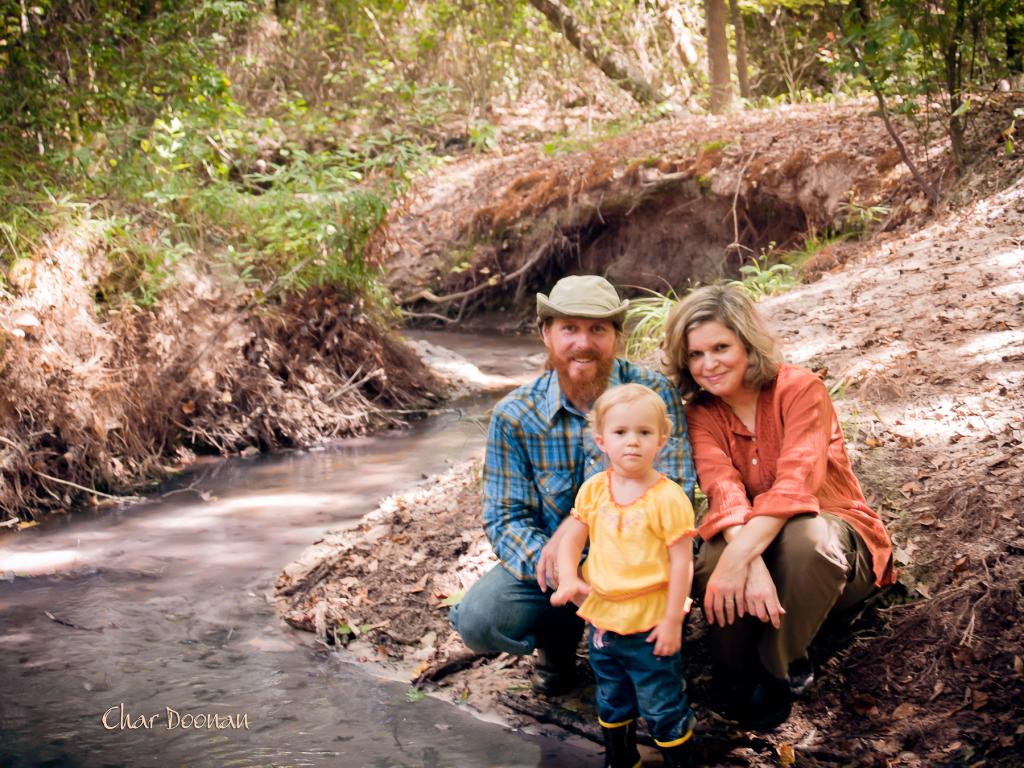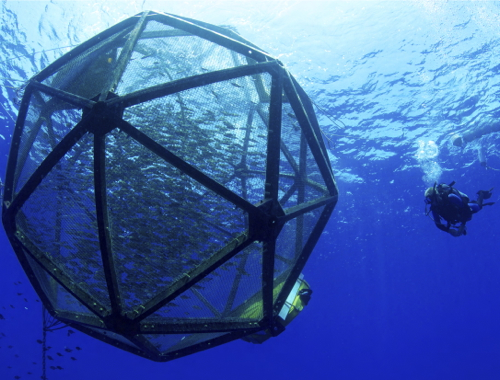
Photo by Bryce Groark.
There’s been a closely watched experiment floating and bobbing in the eddies off the Big Island of Hawaii. Since July, an unanchored pen stocked with 2,000 hatchery-born fish known as kampachi (related to the more familiar yellowtail) has been drifting in the open ocean, tended by marine biologists from the aquaculture company Kampachi Farms. Led by industry pioneer Neil Sims, it’s been dubbed the Velella Project, and it is the first and most important attempt at commercializing offshore aquaculture in the U.S.
Most of today’s marine fish farming takes place close to shore, but many in the industry believe that in order to expand, they need to look further out to the open ocean. And they’re not alone. Aquaculturists in countries like Norway, Ireland, Canada, and Chile are also beginning to explore offshore options, though the technology to accomplish this remains in its infancy.
Critics of aquaculture often point to problems of pollution, inefficient feed ratios, particularly for carnivorous fish, and worries of escapement. But in the case of the Velella Project, those concerns seemingly have been addressed.
To hold the fish, Sims used a specially designed structure called the Aquapod. Its unusual sphere-shaped design helps reduce fish escapes — called “leakage” by the industry — and can withstand tough ocean conditions. The kampachi are native to Hawaiian waters, and travel in schools by nature. If fish escape, they tend to cluster near the pen, and avoid the open blue water. A native species also eliminates the risk of cross-breeding.
While the project hasn’t been without its difficulties — two early trial pens were lost, and unexpected La Niña conditions have made predicting and tracking eddy patterns difficult — initial results look promising. That’s good news for those in the aquaculture industry who are hoping to overcome the technical and regulatory challenges of expanding into federal waters, 3-200 miles from shore.
“The Velella beta test showed us that the biological performance of fish in a drifter cage system is astonishing,” says Sims.
Indeed, the fish used in the Velella Project grew to harvest size in half the time; survival rate inside the Aquapod was high; and because Sims used a high protein soy feed, instead of one that relies heavily on fish meal, the ratio of fish in to fish out reached a more sustainable level than many other more traditional farm-raised fish. As for pollution concerns, the pen was located in ocean water up to 12,000 feet deep, and according to Sims, there was no measurable impact on water quality, coral reefs, or marine mammals — concerns that have had some environmental groups deeply worried.
So why exactly does this seemingly futuristic project matter to eaters? By 2015, the world will be consuming more farm-raised fish than wild caught. According to a report released last summer by the WorldFish Center and Conservation International, aquaculture may be one of the most efficient methods of producing protein for the world’s burgeoning population, with potentially less environmental impacts than cattle, poultry, or pigs.

Photo by Bryce Groark.
But access to coastal sites for fish farming has its limitations. In order to meet some of that growth, we must either bring aquaculture onto land, or overcome the challenges of pushing it further out into federal waters. What you’re witnessing in the Velella Project is the first substantial push into deeper U.S. waters.
“If we’re going to feed the world protein, aquaculture is the best way to do it, and someplace we ought to be looking is offshore,” says Michael Rubino, director of NOAA Fisheries’ Aquaculture Program.
That may be easier said than done. In addition to challenges like nearly constant battering by ocean waves, high fuel costs for ships that maintain the pens (in the case of the Velella Project, a manned boat remained tethered to the pod at all times, to ensure it doesn’t float too far off course, and to house the staff monitoring the project), and an array of other technical obstacles, there’s the fact that no regulations have been put in place.
Rubino would also like to see a set of laws that are specific to open water aquaculture. “Under current fisheries laws, aquaculture has been interpreted as fishing. We need new legislation,” he says.
NOAA is interested in the progress being made by the Velella Project, but stresses the importance of gradual, step-by-step development of this technology. “If we can solve these regulatory issues, we’ll issue a certain number of permits, and if those work, then in the second 10 years, we’ll issue more. [NOAA] has a stewardship mission. This has to be done in the context of healthy oceans,” says Rubino.

Neil Sims on a boat near the submerged Aquapod. (Photo by Bryce Groark.)
The other way that offshore aquaculture might expand, says Rubino, is if each regional fisheries management council (there are eight around the country) devises its own management plan for aquaculture. That’s something the Gulf of Mexico Council [PDF] has already done, putting the area first in line for commercial offshore aquaculture.
Chris Mann, director of Pew Environment Group’s Aquaculture Standards Project, says that while the Velella Project does seem to have good results so far, the conversation really needs to be about scale.
“We appreciate someone like Neil thinking about aquaculture in a different way. What we’re not crazy about is taking the CAFO model of livestock and putting it in the ocean. Fish poop in the water; if you have a massive industry, you get a lot of pollution and problems. If you have small scale, [like the Velella Project] with a lot of water flowing through it, you have fewer problems,” says Mann.
Sims says he recognizes the need for scale, and the fact that offshore aquaculture means making use of a common resource.
He’s recently applied for permits for the next step, Velella Gamma, which will involve mooring the pod to a single point on the ocean floor and may require less staff monitoring. This stage will also involve placing the pod closer, into water depths of 6,000 feet. And the goal will be to move toward more automation. “Machines can work better in rough sea than people,” he adds.
In the end, economics will likely dictate whether or not offshore aquaculture truly takes off in the next decade.
“The great promise of aquaculture – the ‘Blue Revolution’ – is that it can produce a healthy and abundant supply of protein for a world that’s going to need a lot more of it, but you can only do that if you make the right choices of species,” says Mann. He worries that producers of larger fish are more motivated by the marketplace, than by a drive to feed the world sustainably.
“You feed the world with shellfish and tilapia,” he says. “Not salmon or shrimp for $15 a pound.”
Either way, Sims will continue to push the envelope. As he sees it, there’s been a lot of fear-mongering about aquaculture. And, like all food production, he stresses the how in the equation.
“There’s a ground swell of recognition that this is a direction we have to go,” he says. “Let’s just do it right.”



